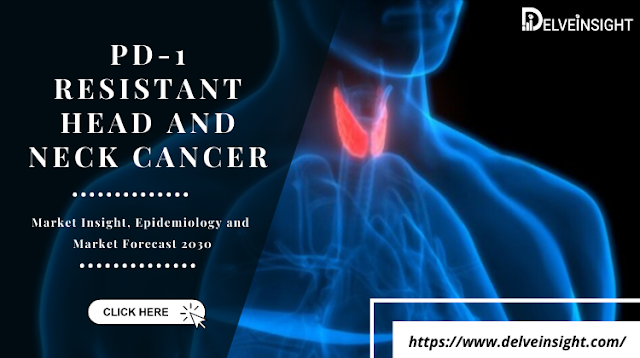Head and Neck Cancers usually begin in the squamous cells that line the moist, mucosal surfaces inside the head and neck (for example, inside the mouth, the nose, and the throat). These squamous cell cancers are often referred to as squamous cell carcinoma of Head and Neck Cancer.
The
symptoms of Head and Neck Cancers may include a lump or a sore that does not
heal, a sore throat that does not go away, difficulty in swallowing, and a
change or hoarseness in the voice. Symptoms may vary depending upon the site of
cancer.
Cancer cells have the ability to spread to other parts of the body. Cancer cells in the head or neck can sometimes travel to the lungs and grow there. When cancer cells do this, it’s called metastasis, by PD-1 resistant head and neck cancer Market
Patients who
demonstrate the growth of cancer outside of the original head and neck site or
lymph nodes of the head and neck have developed distant metastases, and are considered
to have an incurable disease.
Compared with the traditional treatments, the up-and-coming anti-PD-1/PD-L1 agents present better efficacy and lower toxicity for patients with advanced HNSCC.
Alcohol and tobacco use are the two most important risk factors for Head and Neck Cancers, especially cancers of the oral cavity, oropharynx, hypopharynx, and larynx. At least 75% of Head and Neck Cancers are caused by tobacco and alcohol use.
Infection with cancer-causing types of human
papillomavirus (HPV), especially HPV type 16, is a risk factor for some types
of Metastatic Head and Neck Cancers, particularly oropharyngeal cancers that
involve the tonsils or the base of the tongue.
Original Source:- PD-1 resistant head and neck cancer Market Report

Comments
Post a Comment